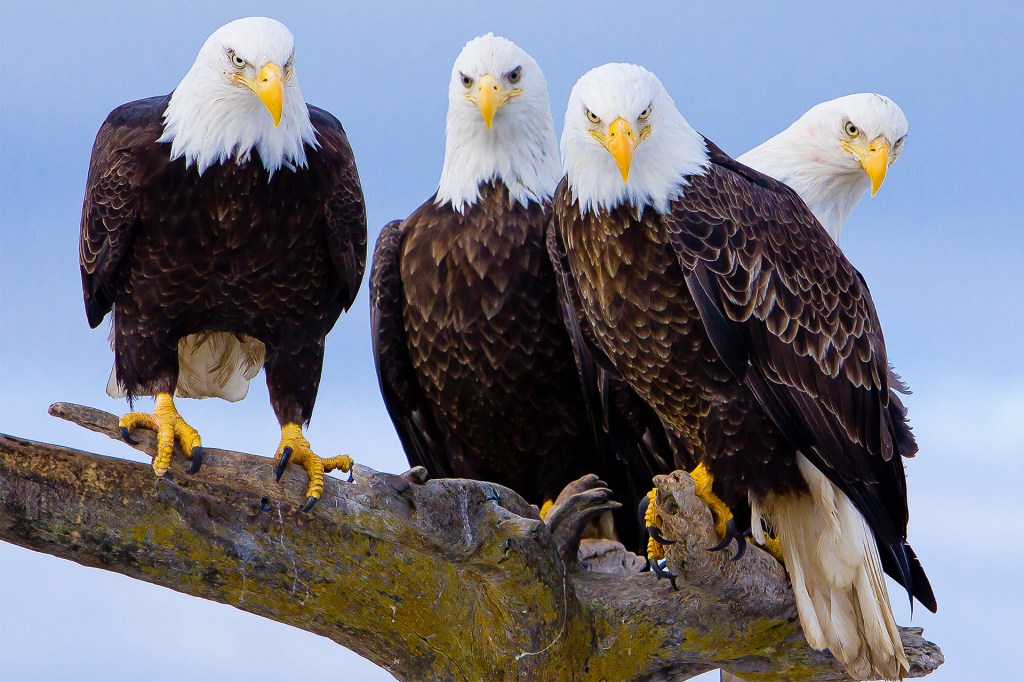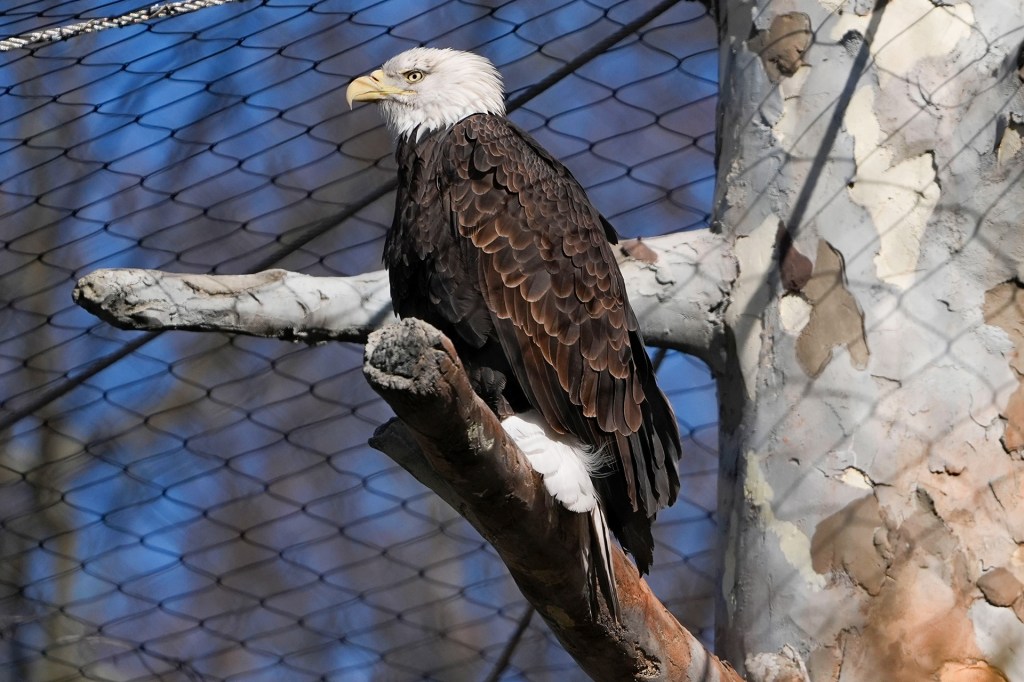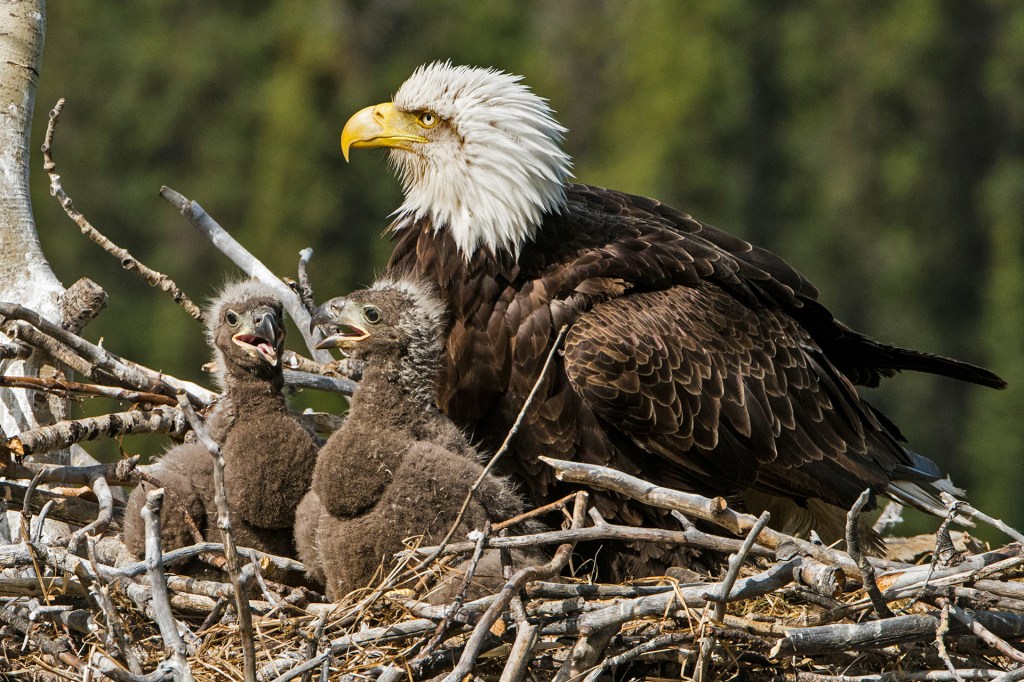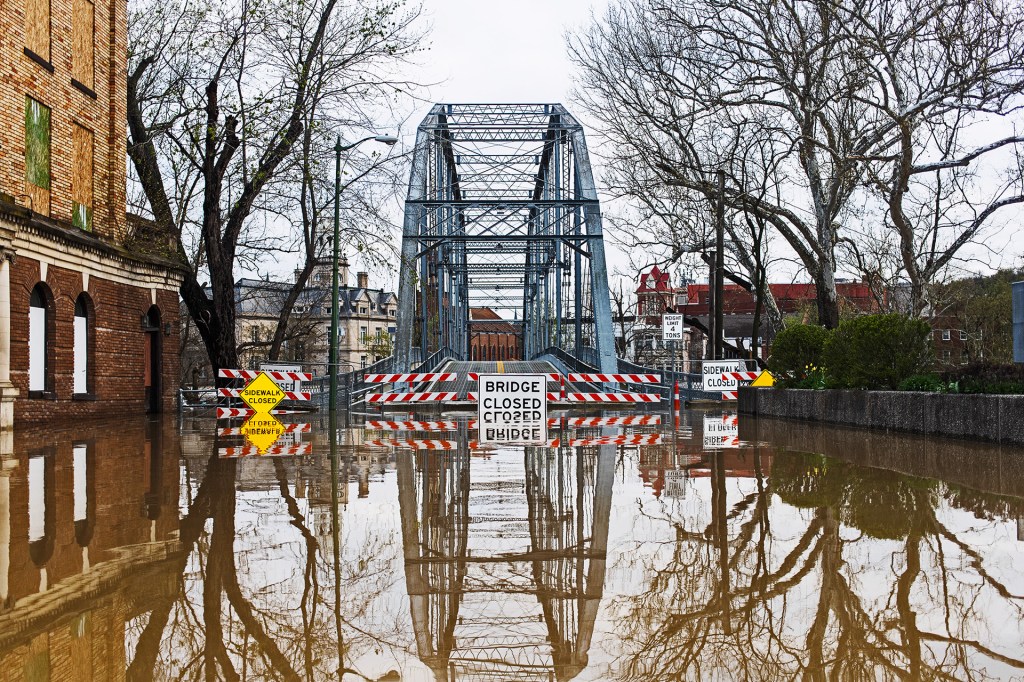Eagles on the Rise

The bald eagle is the national bird of the United States. It’s known for its huge wingspan and fierce gaze. But not so long ago, eagles were in trouble.
A chemical called DDT was introduced in the 1940s. It was meant to kill pests. But it also harmed people and animals. DDT weakened the shells of eagle eggs, so fewer eaglets hatched. In 1967, bald eagles were listed as endangered.
DDT was made illegal in 1972. But by then, the eagle population was very low. There were fewer than 600 eagles in the lower 48 states. Now there are signs of hope.

PERCH IT This eagle lives in a New Jersey zoo. In January, the state took eagles off of its endangered list.
SETH WENIG—AP PHOTO
Rescue Mission
Many people worked to increase the eagle population. They brought in healthy eagles from other places, such as Canada. These conservationists helped the eggs hatch safely.
The birds were removed from the federal list of threatened and endangered species in 2007. This January, New Jersey became the latest state to delist the eagle as endangered. In the 1980s, there was just one nesting pair of eagles in the entire state. Today, there are roughly 300.

HAPPY FAMILY A bald eagle nests with its two babies, called eaglets. Females usually lay one to three eggs a year.
MARK NEWMAN—GETTY IMAGES
Staying Alive
Bald eagles still face dangers. They get hit by cars and become tangled in fishing line. They also get sick from bird flu. It’s a disease affecting animals all over the country.
Kathy Benner is the executive director of the American Bald Eagle Foundation. She told TIME for Kids that bald eagles are “important to the ecosystem.” For one thing, they eat pests, like mice.
Wildlife biologist Matthew Palumbo agrees. If you see an eagle in the wild, he says, be sure to watch it from far away. “One way to help protect them is to give them plenty of space,” Palumbo says.













